
The first half of 2025 has flown by quickly, and NIT was busy with various symposia, workshops, and other events this semester. Numerous researchers and fellows visited the NIT Library to conduct their research. We are pleased to share our new fellowship call as well as some recent and upcoming news about what’s happening at NIT.
Past Activities
NIT Day in Nijmegen
On 6 December 2024, the second edition of NIT Day was held at Radboud University in Nijmegen. The event brought together scholars, students, and alumni with shared interests in the archaeology, history, and heritage of Türkiye. The program featured presentations from former fellows and early-career researchers conducting exciting new work, alongside updates on NIT’s ongoing projects, fellowship opportunities, and collaborations with Dutch academic institutions.
The event offered a valuable opportunity for networking, discussion, and inspiration, fostering meaningful dialogue and encouraging cross-disciplinary connections. You can follow our updates to find out where the next NIT Day will be organized in late 2025.
First Anatolian Chalcolithic Workshop

The Netherlands Institute in Turkey hosted the inaugural First Anatolian Chalcolithic Workshop on January 10, 2025, marking the successful launch of an exciting new academic platform. This online event brought together researchers studying the Chalcolithic Period in Anatolia.
The workshop featured three comprehensive sessions showcasing cutting-edge research from across Turkey. Highlights included presentations on newly discovered sites, such as Büyük Deller in Central Anatolia, technological studies of ceramics from Zeytinli Bahçe Höyük, and insights from ongoing excavations at Mersin-Yumuktepe and Tell Kurdu. The program spanned diverse geographical regions from Eastern Anatolia to Cilicia and Hatay Province.
Leading archaeologists presented findings on cultural transitions, settlement patterns, and technological innovations that shaped Anatolian societies during this crucial prehistoric period. Topics ranged from Ubaid expansion to early urban development and agricultural economies.
This initiative represented a significant step forward in Anatolian prehistoric research, providing scholars with a dedicated forum for sharing discoveries and fostering collaboration across institutions studying this transformative period in human history.
The Phrygian Highlands through the Lens of Emilie Haspels Exhibition
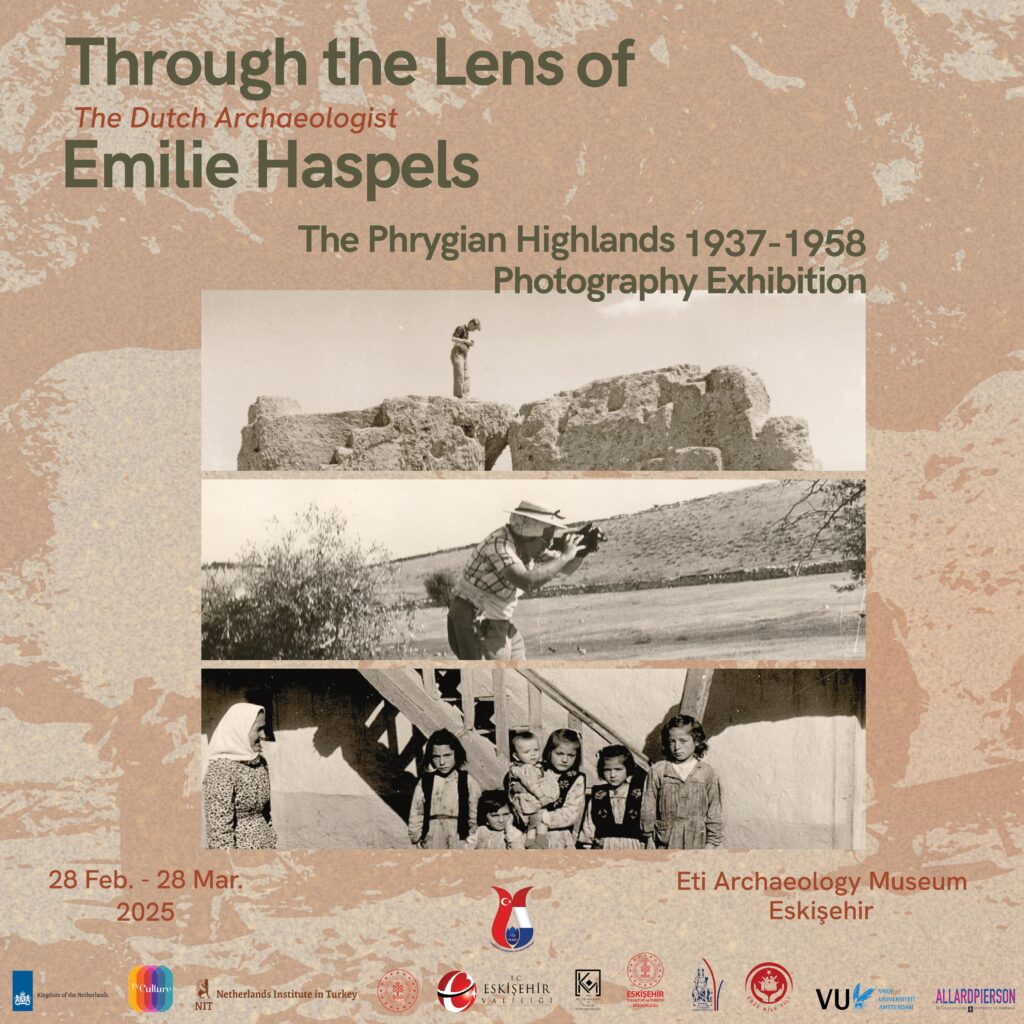
The traveling exhibition Through the Lens of Emilie Haspels: The Phrygian Highlands 1937-1958 was first presented between February 28 and March 28, 2025 in Eskişehir Eti Archaeology Museum. After Eskişehir, the exhibition traveled to the archaeology museums in Afyonkarahisar and Kütahya, and will likely come to Istanbul soon.



This remarkable exhibition showcases the pioneering work of Dutch archaeologist Emilie Haspels, who systematically documented Phrygian archaeological monuments across central Anatolia over a period of more than two decades. Born in 1894, Haspels first arrived in the region in 1937 to study the Midas Monument at Yazılıkaya and became captivated by the area’s ancient Phrygian heritage. Her innovative regional survey approach and meticulous documentation, including detailed photographs, drawings, and descriptions, culminated in her seminal 1971 publication “The Highlands of Phrygia.” The exhibition featured archival photographs that were mostly taken by Hasples herself, stored at the University of Amsterdam’s Allard Pierson Museum, showcasing not only archaeological sites but also village life and landscapes of mid-20th-century Anatolia.
Istanbul’s Water Heritage Tour Launch
A successful collaborative project between the Netherlands Institute in Turkey, Hrant Dink Foundation, and Radboud University, with support from Vrije University, has resulted in a new addition to the KarDes: Multicultural Memory Tours Guide mobile application. The launch event for “Istanbul’s Water Heritage Tour” took place on Wednesday, February 19, 2025, at the Hrant Dink Foundation, showcasing the significant contribution to preserving and promoting Istanbul’s multilayered water heritage. This project aims to raise awareness about water supply and management issues in Istanbul, from the past to the present. Despite the city being surrounded by the sea on three sides, it has always lacked freshwater sources.
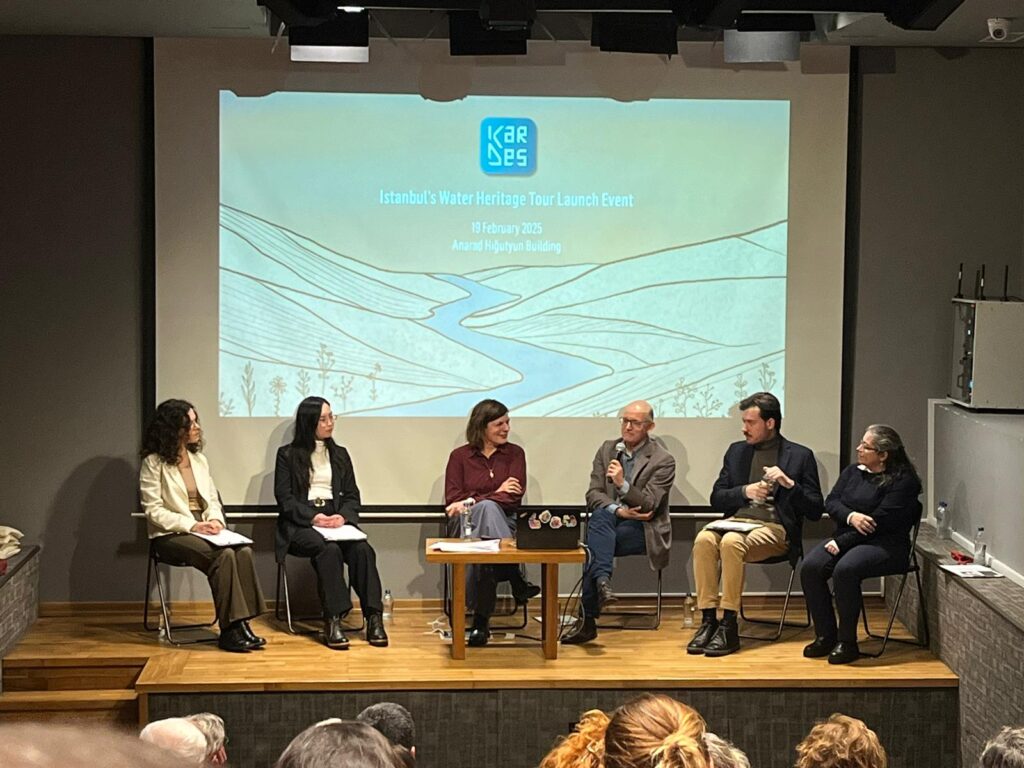
This innovative tour invites users to explore Istanbul’s rich water heritage, from the Zeyrek Cistern to the Çinili Hamam, and from the Valens Aqueduct to the Ayşe Sultan Fountain. The tour includes stops at cisterns, aqueducts, baths, fountains, sebils, mosques, and churches, alongside stories of Istanbul’s fire brigades, water carriers, bath attendants, and fishermen. The voices of İlksen Mavituna and Jennifer Hattam accompany users.
Travelers in Ottoman Lands, Places Forgotten, Places Remembered
The third Travellers in Ottoman Lands Seminar (TIOL3) “Places Forgotten, Places Remembered” took place in Istanbul from April 9-12, 2025. This prestigious symposium brought together international scholars, researchers, and enthusiasts to explore the rich history of travel in former Ottoman territories. Several former NIT fellows also had the opportunity to present their research during the symposium.
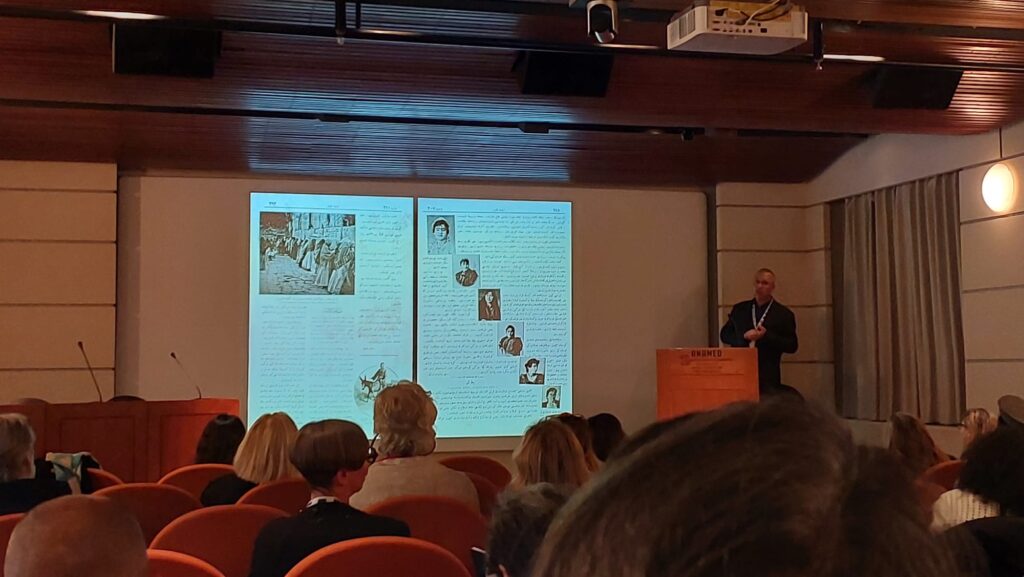
Over the course of three days, presentations took place in the historic neighborhoods of Karaköy and Beyoğlu, at Minerva Han and the ANAMED Auditorium. The conference concluded with excursions to the Tulip Gardens at Emirgan Korusu and the Feriköy Protestant Cemetery. Distinguished keynote speakers included Dr. Ahmet Ersoy from Boğaziçi University, a specialist in Late Ottoman cultural history, and Professor Reina Lewis from the University of the Arts London, who focuses on gender and orientalism in travel narratives.
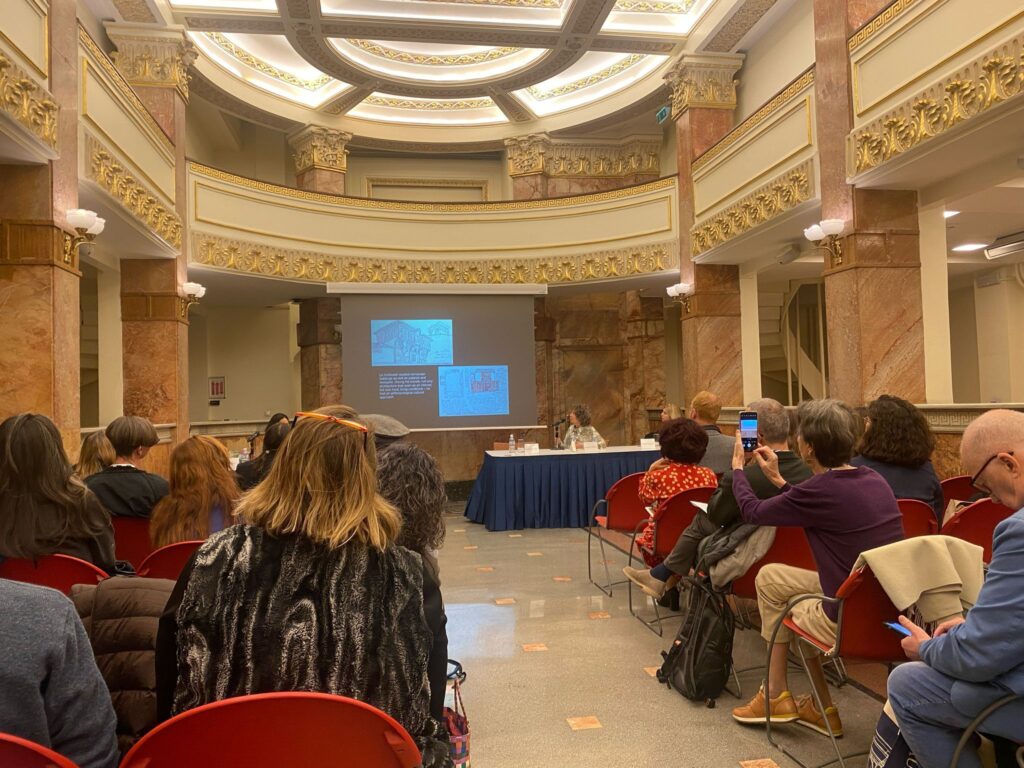
This interdisciplinary seminar was supported by leading institutions including the Faculty of Arts and Social Sciences of Sabancı University, the Netherlands Institute in Turkey (NIT) and the Koç University Research Centre for Anatolian Civilizations (ANAMED), the British Institute at Ankara (BIAA), the Association for the Study of Travel in Egypt and the Near East (ASTENE), the American Research Institute in Turkey (ARIT) the Swedish Research Institute in Istanbul, and Cornucopia Magazine, continuing the mission of fostering research into Ottoman travel history and creating networks among scholars worldwide.
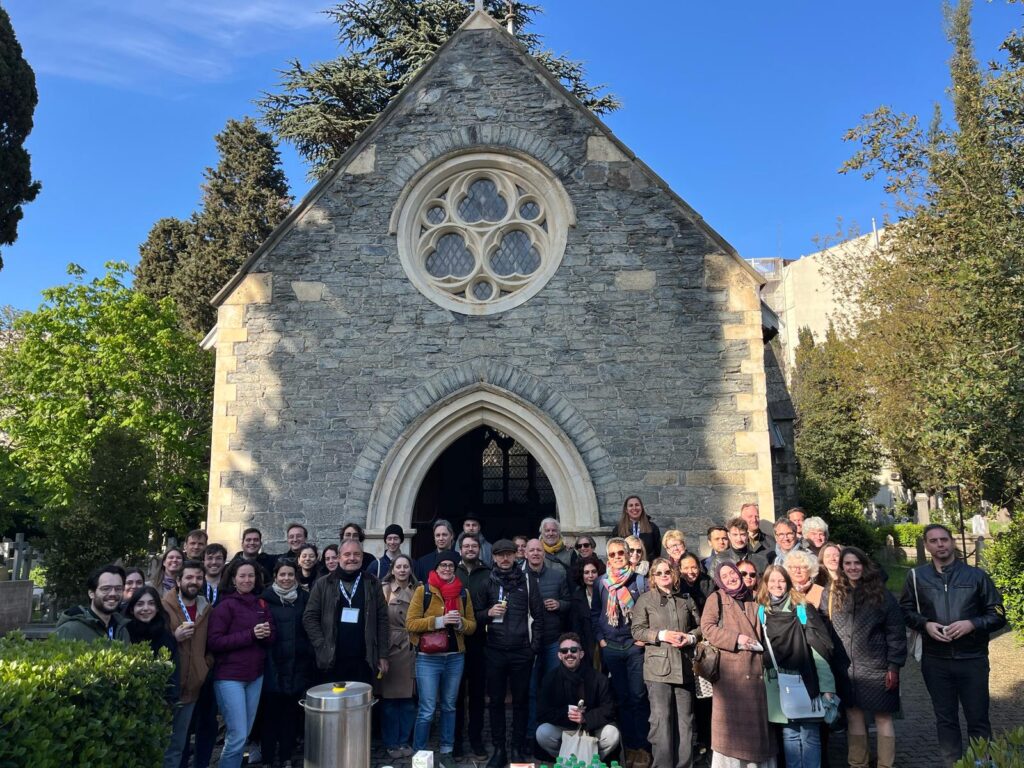
Connecting Constantinople Workshop
The Connecting Constantinople: Objects, Empire, and Inter-Civic Relationality workshop took place at the Swedish Research Institute in Istanbul on June 12-13, 2025. This interdisciplinary workshop examined how objects shaped the complex relationships between Constantinople and other cities throughout history.



The workshop explored how tangible and symbolic objects served as mediators in inter-urban connections, from Constantine’s transfer of the Palladium from Rome to Sultan Selim I’s acquisition of the Ka’aba keys. Scholars investigated the movement, accumulation, and distribution of objects that contributed to Constantinople’s development as an imperial and cosmopolitan space.
The presentations covered a diverse range of topics, including relics and martyrs, sculpture, icons, diplomatic gifts, and cultural restitution. The event featured a keynote by Karin Krause from the University of Chicago on “Venice and Genoa in late medieval Constantinople.” The workshop concluded with a book launch, Constantinople through the Ages. The Visible City from Its Foundation to Contemporary Istanbul, edited by Diederik Burgersdijk, Fokke Gerritsen, and Willemijn Waal.
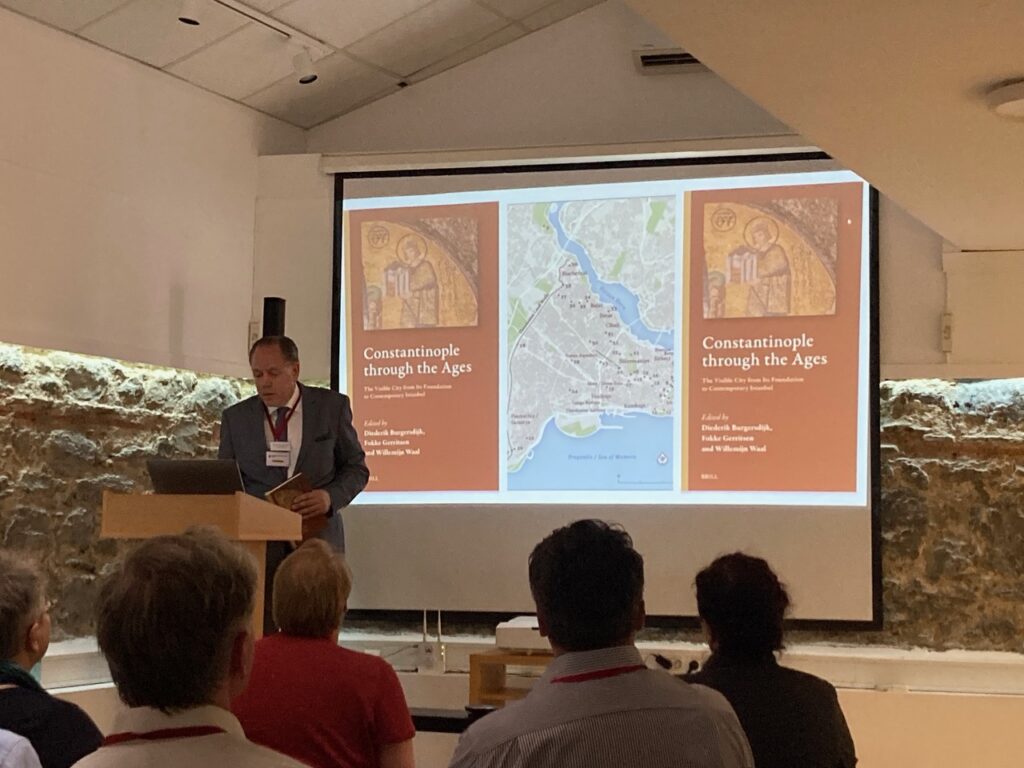
This workshop was made possible through the generous support of the Swedish Research Institute in Istanbul, the Netherlands Institute in Turkey, Utrecht University, the University of Amsterdam, and the National Research School in Classical Studies, fostering new interdisciplinary perspectives on urban connectivity and mobility.
Apply for Autumn 2025 Fellowships!
NIT offers two types of fellowships at the Netherlands Institute in Turkey (Istanbul) in the autumn of 2025. Please visit this link for more information about the fellowships and the application form.

Residential Fellowships
NIT offers four residential fellowships for the autumn of 2025. This fellowship offer includes free accommodation in an apartment near the institute and 24/7 access to the NIT library for four weeks.
Deadline for applications: 24 August 2025
Fellowship periods
Period 1: 6 October – 2 November 2025 (2 fellowships)
Period 2: 3 November – 7 December 2025 (2 fellowships)
Non-Residential Fellowships
NIT offers two non-residential fellowships during the autumn of 2025. This fellowship includes an allowance of 400 euros for travel and living expenses and 24/7 access to the NIT library.
Deadline for applications: 24 August 2025
Fellowship period
One month between 15 September and 31 December 2025 (2 fellowships)
NIT Spring 2025 Fellows
In the spring of 2025, NIT library welcomed four fellows working on a range of topics from medieval poetry to the water infrastructure of Istanbul.
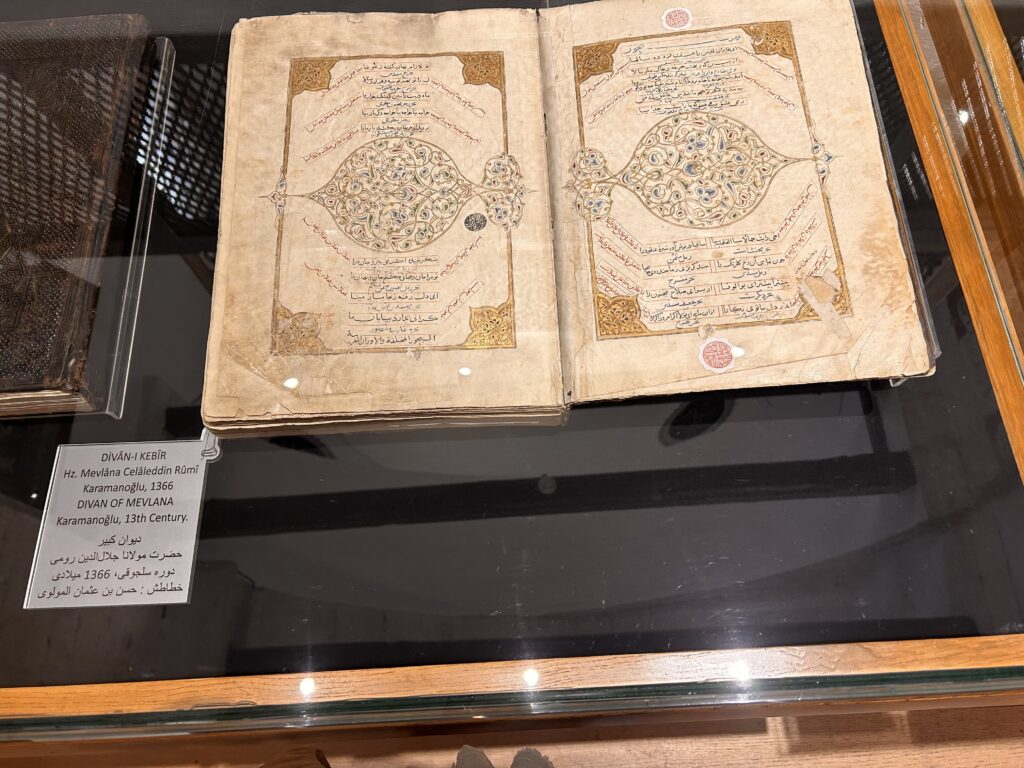
Yasmin Saghafi (Leiden University) studied medieval Persian Sufi poetry manuscripts during her fellowship at the Netherlands Institute in Turkey. Her research explores how 13th-14th century Sufi narratives developed in Anatolia’s bilingual environment, particularly through the Mawlaviyya order in Konya. Yasmin examined manuscripts in Istanbul’s Süleymaniye collection and Konya’s Mevlana Museum, investigating how these texts represent communal Islamic history and Sufi tradition in the socio-political context of medieval Anatolia’s manuscript culture. Go here for Yasmin’s blogpost about her research.
Rana Kelleci (Dutch Art Institute/ArtEZ University) spent February 2025 as a research fellow at the NIT, investigating the Ottoman Tulip Period (1718-1730). Her research focused on the vanished Sadabad Palace in Kağıthane through 16th-20th century maps. Analyzing Ottoman and European cartographic representations, Rana explored how the palace’s absence from today’s landscape reflects broader questions about collective memory, identity, and belonging to place. Go here for Rana’s blogpost about her research.

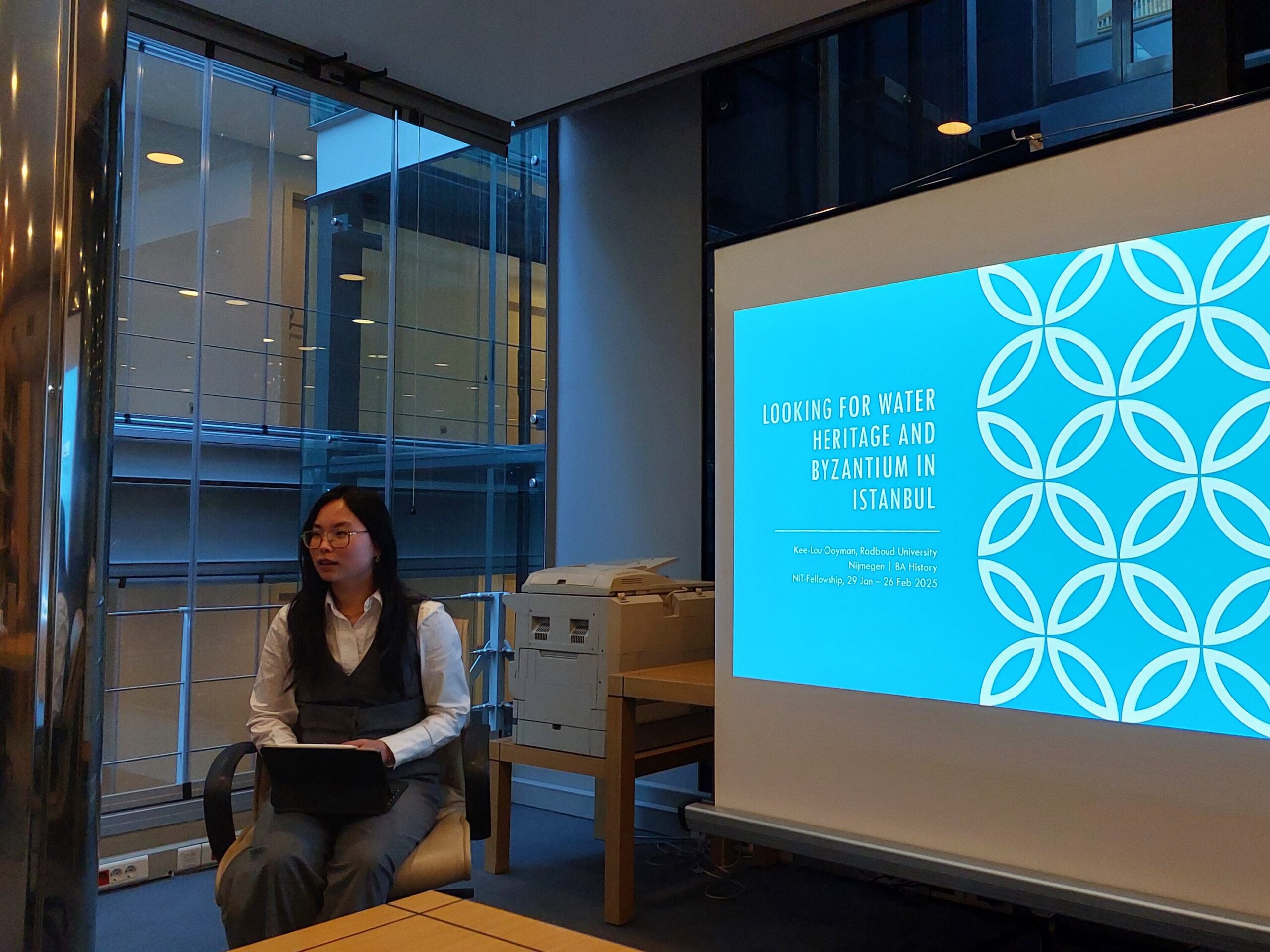
Kee-Lou Ooyman (Radboud University, Nijmegen) focused on exploring Istanbul’s millennium-long struggle with freshwater supply during her fellowship at NIT. Despite being surrounded by saltwater, the city has imported drinkable water from outside sources throughout its Byzantine and Ottoman history. Kee-Lou helped develop Istanbul’s Water Heritage tour, which was launched in February, highlighting remnants of ancient water infrastructure, from Emperor Valens’ aqueducts to Mimar Sinan’s Ottoman expansions, and connecting historical challenges to today’s climate change concerns. Go here to read her blog post about her research.
Giorgos Polychroniadis (Leiden University) studied 3rd-4th century Greek funerary epigrams during his fellowship. His research examines how Christian elites in Asia Minor, particularly in Phrygia and Lycaonia, blended classical paideia with Christian doctrine in their epitaphs. Giorgos made use of the Turkish publications at NIT and ANAMED libraries, investigating how bishops negotiated identity by appropriating Homeric and pagan literary traditions during Christianity’s emergence as the Roman Empire’s official religion. You can read his blog post about his research here.
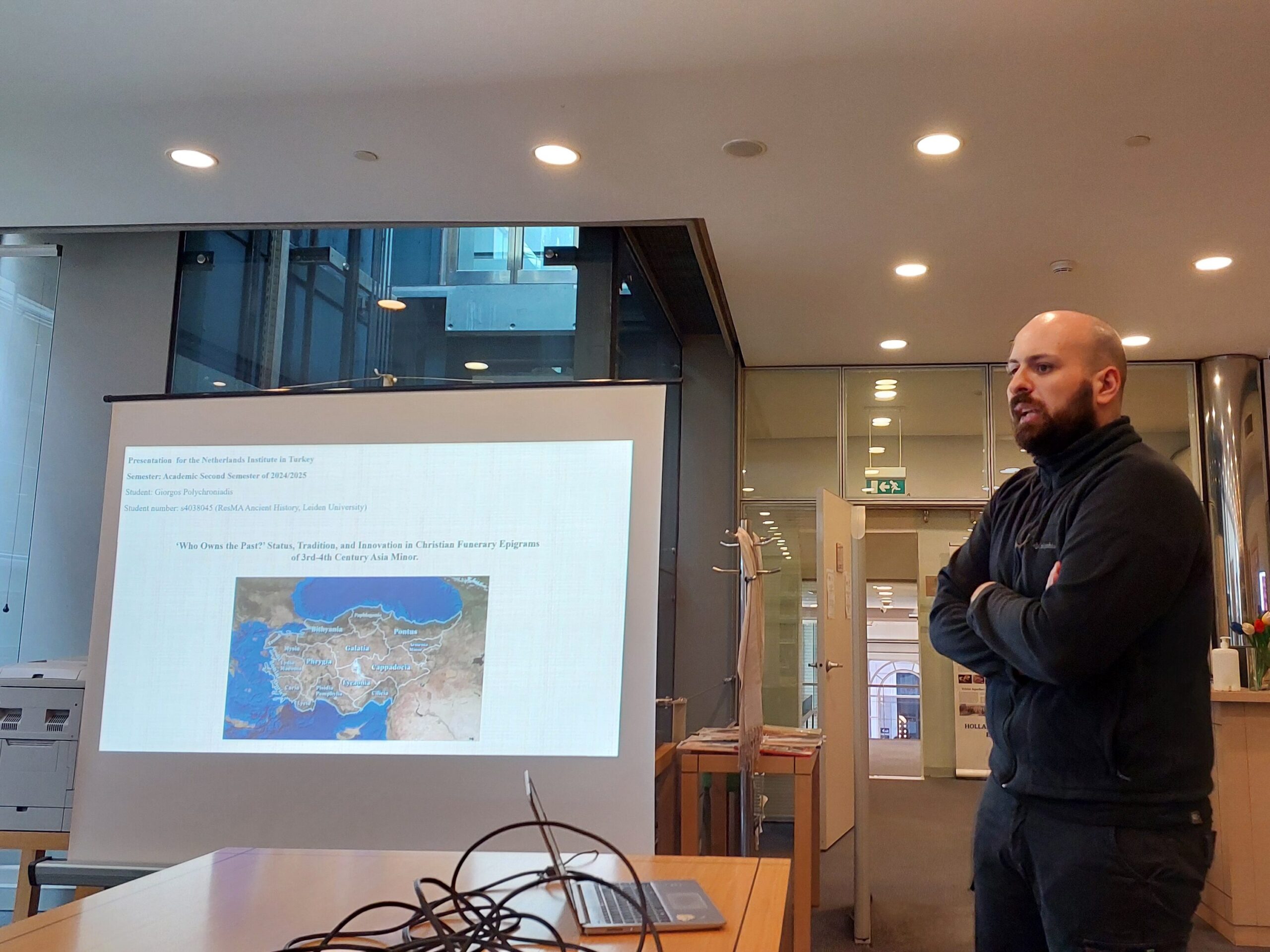
BA Semester
Every year, NIT offers a semester-long Turkish Studies program in Istanbul for undergraduate students enrolled in Middle Eastern Studies at Leiden University. The program includes Turkish language courses and courses on Turkey’s international relations, Istanbul’s history, and contemporary Turkish society and culture. The 30 EC semester combines classroom instruction with cultural excursions in Istanbul’s vibrant Beyoğlu district.
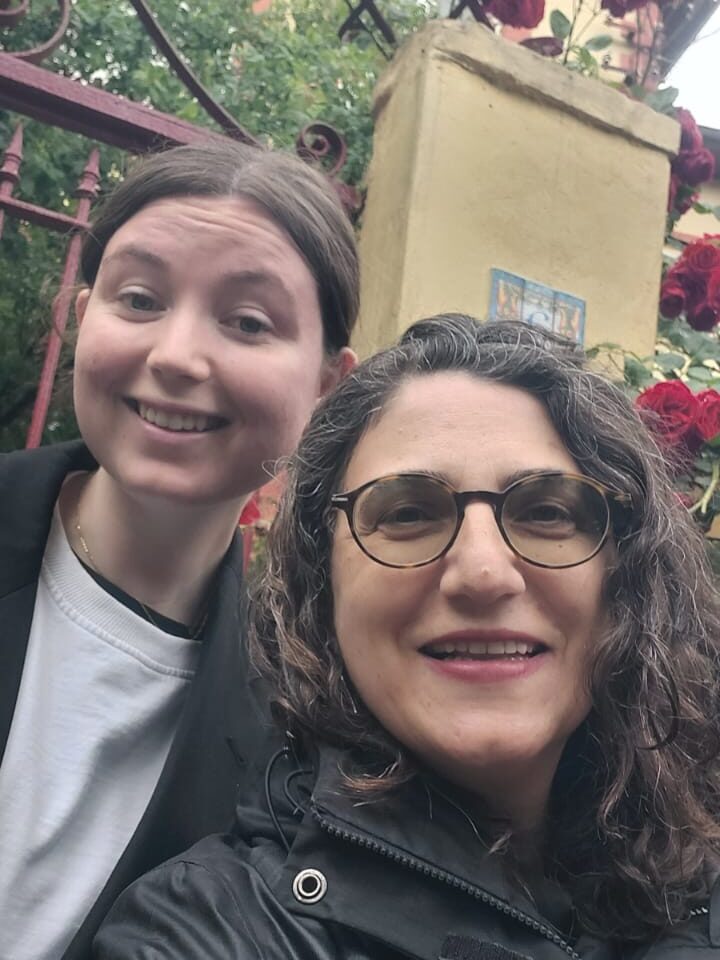
Upcoming Activities
10 July – 10 September 2025: Tell Kurdu Excavation 2025 field season
25-26 September 2025: Session “Participatory Practices in the Adaptive Reuse of Industrial Heritage: Intersections of Industrial Archaeology, Community, and Design” organized at the 7th Edition of International Conference “Challenges and Opportunities in the Conservation, Promotion and Adaptive Reuse of the Industrial Heritage” (ONLINE)
October – December 2025: Urban Heritage Lab 2025: Yazılıkaya Living Lab: Adaptive Futures for Rural Heritage
News from the NIT Staff
Internships
The spring semester was also very busy with students doing their internships at NIT. For the first time, we had three interns in the same semester working on a wide range of projects at the institute.
Julia Benedetti (MA student at the University of Groningen) was at NIT for two months between February and April. She was immensely helpful with various tasks during her internship, with a primary focus on collecting and editing texts for multiple research projects, including chapters from two upcoming Urban Heritage Lab books and working on the documentation and digitization of Dutch funerary heritage at the Feriköy Protestant Cemetery in Istanbul.
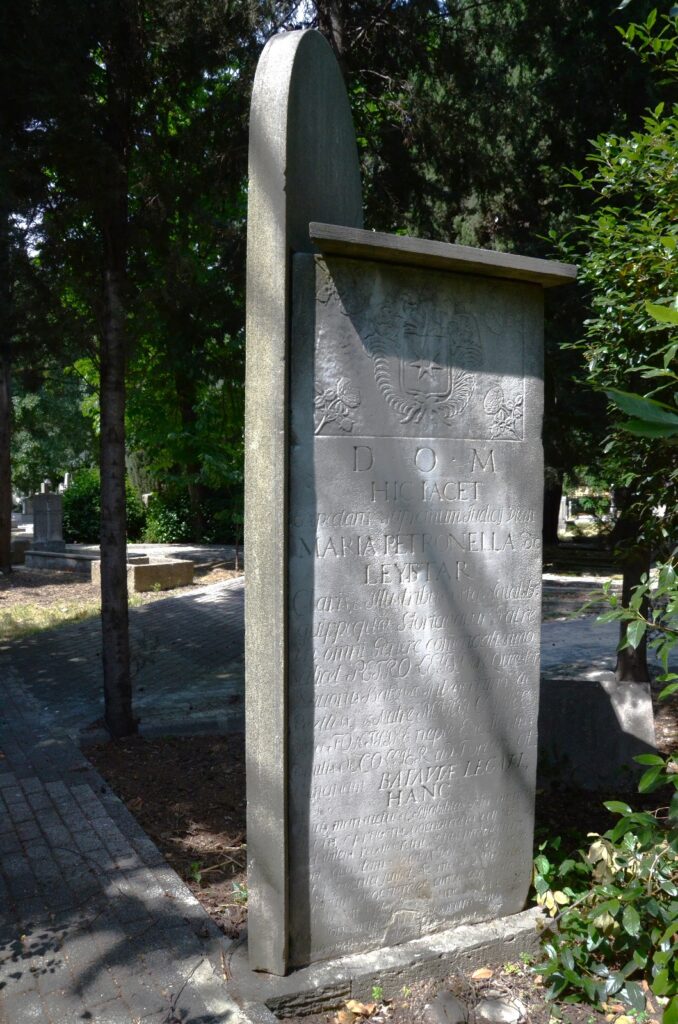
Öykü Maya Erkan (BA student at Istanbul Technical University) is an architecture student who has been working on digitizing the old grave monuments at the Feriköy Protestant Cemetery since late April 2025. She has already completed the 3D modeling of a funerary monument in the Dutch section and is currently working on the 3D digitization of some of the cemetery’s oldest gravestones. She will upload her scans to Sketchfab upon completion of the project.
Berken Vis (BA student at Utrecht University) is about to finish his BA in history. He spent the last two and a half months at NIT, focusing on the Dutch people buried in the Feriköy Protestant Cemetery in his research. He conducted archival research on the Keun family, a prominent Dutch-Levantine family embedded in the social and diplomatic landscape of the late Ottoman Empire. His research took him to the Dutch National Archives as well as the Ottoman Archives. You can read more about his internship at NIT here.
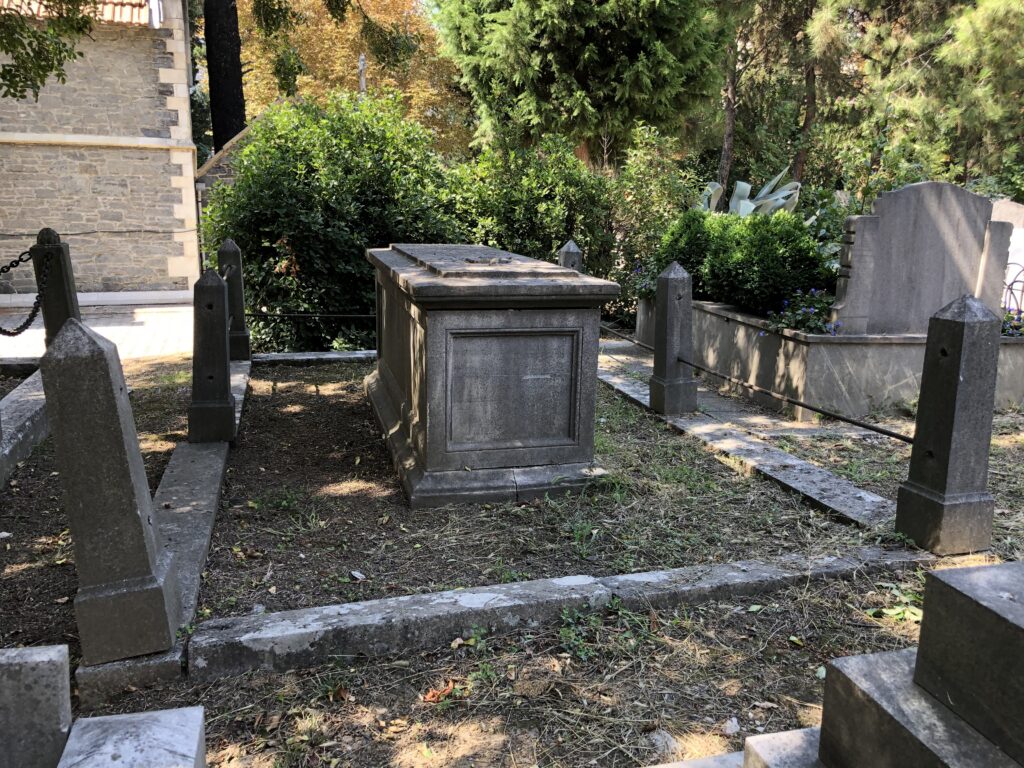
Publications
Aysel Arslan has published her research on fingerprints on clay finds from Barcın Höyük entitled “Barcın Höyük’te paleodermatoglifik (antik parmak izi) çalışmaları” in the proceedings of 38. Arkeometri Sonuçları Toplantısı, in Turkish. You can read the article here.
Anatolica
The editorial process for Anatolica 51 is finalized and the issue is scheduled to appear in the autumn of 2025. Submissions for volume 52 to be published in the fall of 2026 can be submitted until January 1, 2026. Anatolica is published by Peeters Publishers under the aegis of the Netherlands Institute in Turkey; the editorial team is Fokke Gerritsen (editor in chief), Gülşah Günata and Aysel Arslan (assistant editors). Please go here for details about publishing in Anatolica.
Other News from the NIT Office
NIT offices will be closed between 25 June and 10 September. The NIT Library will remain open during this period except for a two weeks break between 15-30 August this year.
